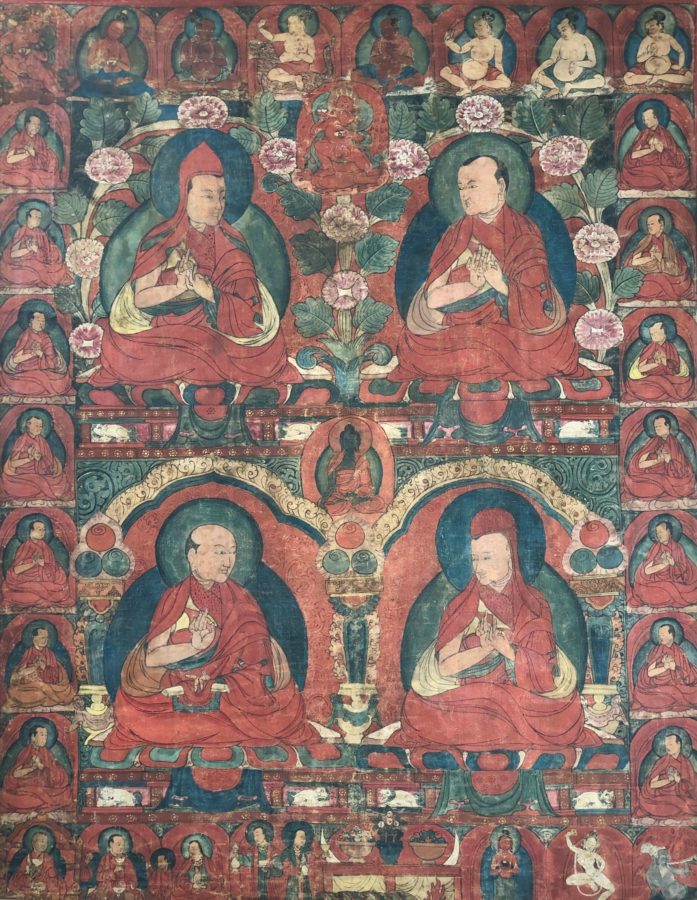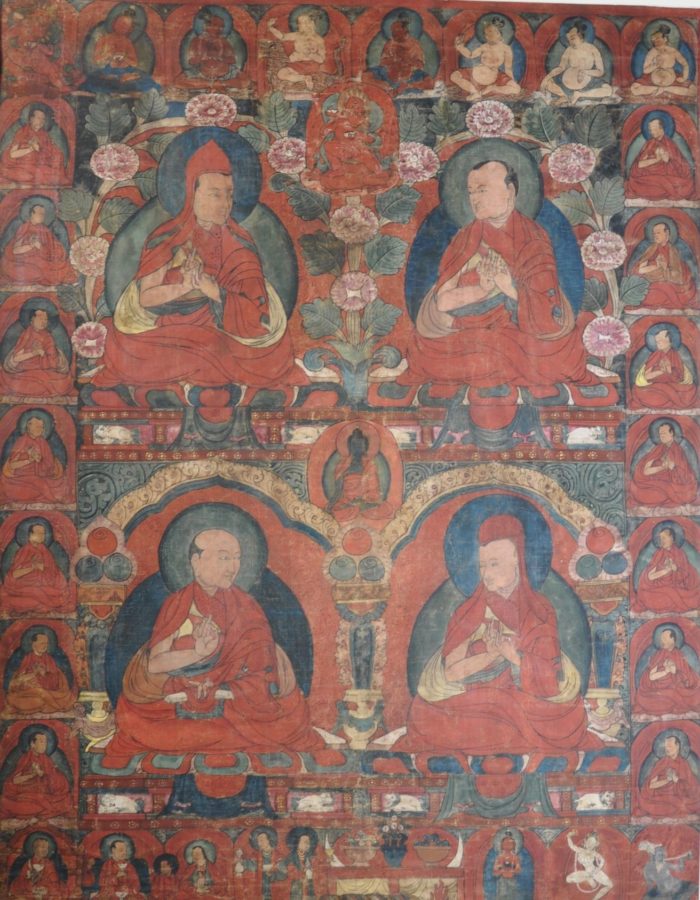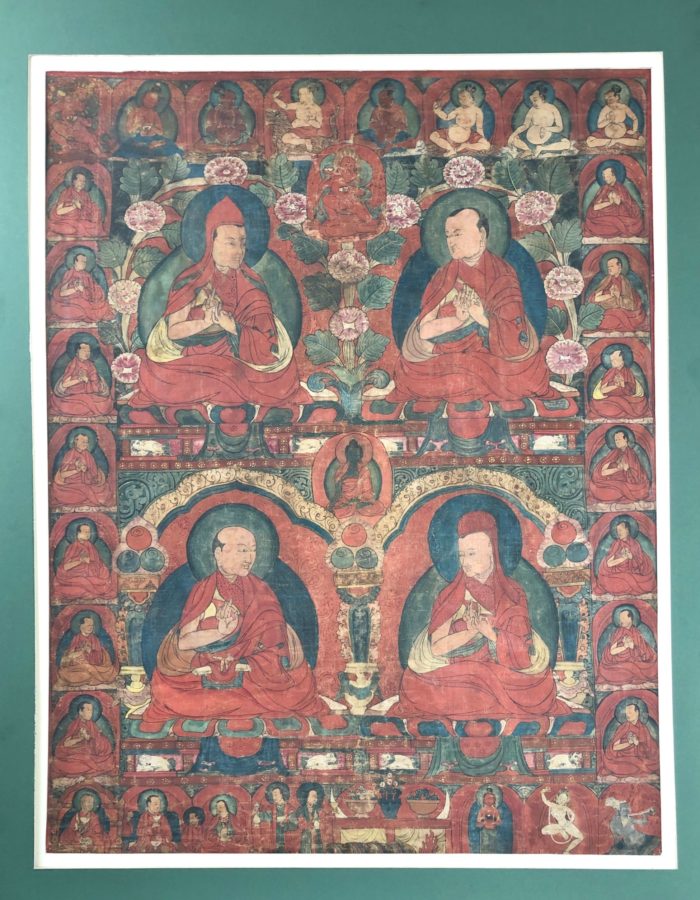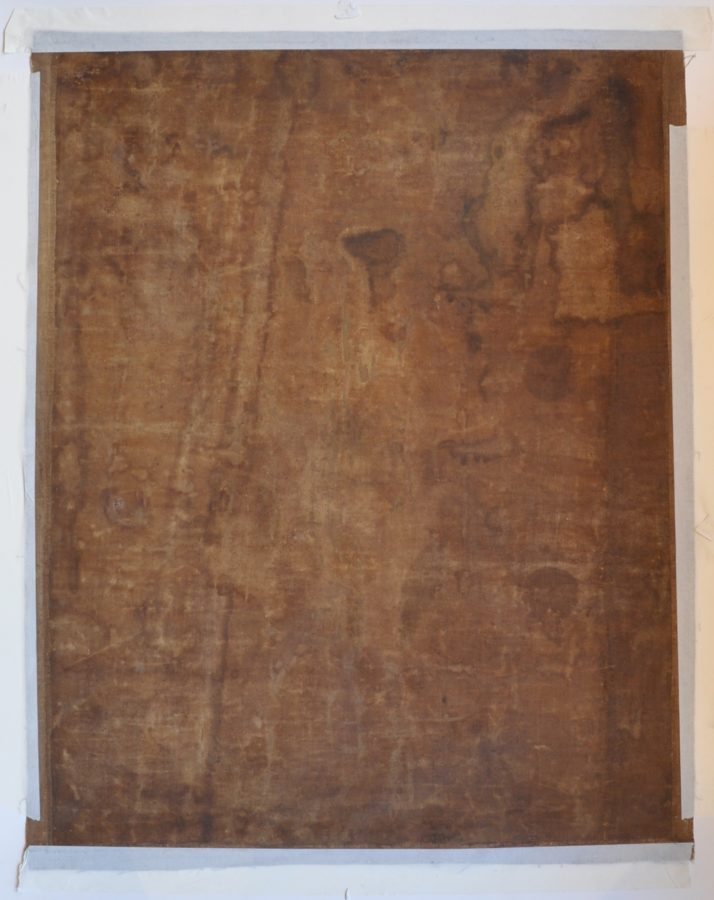This finely-rendered thangka or traditional Tibetan painting on cloth, is in the Sakyapa lineage. It depicts two pairs of Tibetan monks or lamas. One of each pair wears red headgear to denote rank. Each is seated on lion supported lotus thrones.
This finely-rendered thangka or traditional Tibetan painting on cloth, is in the Sakyapa lineage. It depicts two pairs of Tibetan monks or lamas. One of each pair wears red headgear to denote rank. Each is seated on lion supported lotus thrones.
This finely-rendered thangka or traditional Tibetan painting on cloth, is in the Sakyapa lineage. It depicts two pairs of Tibetan monks or lamas. One of each pair wears red headgear to denote rank. Each is seated on lion supported lotus thrones.
The upper pair are seated surrounded by lotus flowers and accompanied by a Dem.chog Sakti.
The lower pair are seated beneath scrolled, cusped arches which emanate from Amrita vessels each piled with three wish-fulfilling jewels.
The noteworthy aspect of such lineage thangas is that the central figures in them are connected with one another often physically or iconographically by means of shared aureole structures and intertwining vines which serve to emphasise the figures’ interconnectedness. It is possible that this thangka was painted not long after the demise of the monks depicted perhaps as a memorial to them.
This central quadrangle of figures is surrounded by a border of Tantric figures. Each of these figures is shown against a red aureole. This is a common feature among Sakyapa thangkas.
An altar table with various offerings and gifts is shown along the lower register of the painting. These are accompanied by a standing Buddha, a dancing Vajra Yogini, and a Mahasiddhi.
The top of the painting is populated with Mahasiddhis and Yogis. The side borders show seated lamas with their hands in the teaching Mudra position.
The first step in preparing a thangka was to size the cotton fabric with rabbit skin glue. (Size is a gelatinous film forming substance in solution or dispersion form, usually applied to warp yarns cloth. The process stiffens the textile, allowing it to be cut or painted.)
See Pal (1991, p. 154) for a Sakyapa-style thangka with related compositional elements and of similar age.
The predominant use of red, green and blue pigments in this painting is typical of Sakyapa thangkas from the 16th century and especially of those produced in Ngor and Gyantse (Pal, 1990, p. 148).
The condition of this thangka is very good. There are minor losses and there has been minor colouring restorations to restore light pigment loss along the fold marks, but otherwise, the painting is untouched and largely free of overt damage. The thangka would have been attached to a larger silk backing cloth as is typical but as is often the case it has been removed, and edged, to aid in its preservation.
The final image shows the reverse of the thangka.
References
Pal, P., Art of Tibet, Los Angeles County Museum of Art, 1990.
Pal, P., Art of the Himalayas: Treasures from Nepal and Tibet, Hudson Hills Press, 1991.





